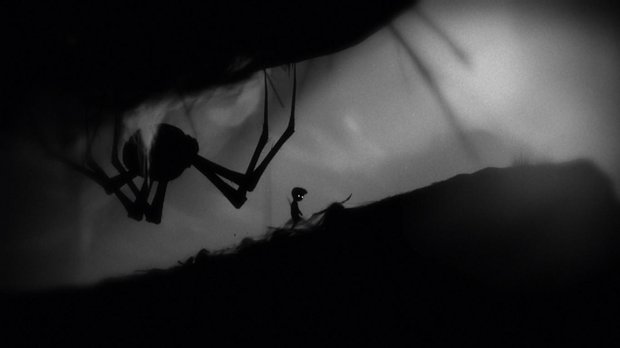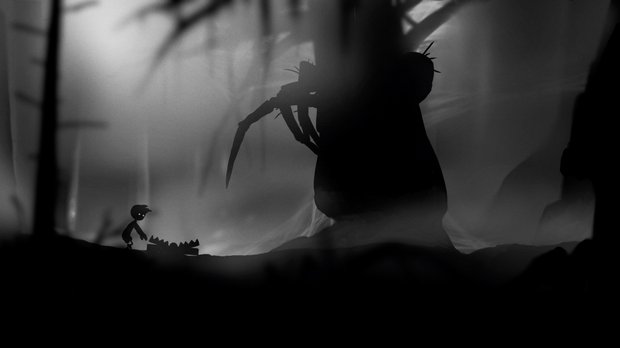How the making of gaming's creepiest spider became a nightmare
Every videogame project has a spider. Most of the time it’s a metaphorical one – the hairy development challenge with eight spindly limbs that must all work in tandem. Or the game-breaking bug that keeps slinking beyond reach just as the programmer closes in to squash it dead. But games have hatched a brood of literal spiders over the years as well. The Zelda series is properly infested, from Gohma to Twilight Princess’s Armoghoma to the Skulltula twirling on her silken strand. Gears of War has its leather-helmeted Corpser. Even Minecraft has spiders. Yet no specimen in the history of gaming epitomises both the metaphorical and literal resonance of the creepy-crawly quite like Limbo.

Arnt Jensen, PlayDead’s founder and game director, couldn’t pinpoint the moment Limbo’s spider appeared in his sketchbook any more than he could date-stamp the onset of his arachnophobia. Until the day he left home, he kept up his nightly bedtime ritual of scanning the room for spiders. If he spotted one, he shook his dad awake and begged him to get rid of it. “I was like 18 years old and I’d be shivering,” Jensen confesses, “because I really hate spiders. And I still do, so it was very natural to confront one in the game, and kill it.”
The basic outline of how Limbo’s boy would interact with the spider crystallised in Jensen’s mind before PlayDead’s founding. The boy would encounter a spider lurking behind a tree. The boy would kill the spider by systematically removing each one of its legs (“It’s like being a child who pulls the legs off insects,” Jensen laughs. “Some psycho children will do that”). At some point before its demise, the spider would trap the boy in a silk cocoon. The boy would wriggle free and, after a brief chase sequence, tear off the spider’s final leg. Pretty straightforward, right?
If only. Development progressed for a year before PlayDead’s team could do anything beyond discussing the challenge of the spider in staff meetings. In addition to the early technical limitations of not having the tools to combine animation and physics, Jensen acknowledges every developer’s tendency to procrastinate on features that will be gruelling to implement. “The human brain always takes the easy decision,” Jensen says. “A lot of times if you have an idea that’s too complicated, you just ditch it. But this was so important. I kept insisting, we have to do the spider in these stages.”

Any other game developer would have instinctively turned the spider into a boss battle. But Jensen’s aversion to videogame clichés meant the struggle between the boy and the spider couldn’t fall back on glowing-orange weak spots or giant blinking eyeballs that beg to be bombarded with sharp projectiles. How was this small boy ever going to outwit a monster several times his size? The initial concept involved hunting down three pieces of gooey, sticky fruit in the tree’s branches that the boy could shake to the ground below and trap the spider in. A far more grisly solution would prevail.
Level designer Peter Buchardt thought it would be funny to see the boy getting snapped in a bear trap so, on a whim, he mocked up a physics-based trap. The concept circulated around the office, sparking laughter from his colleagues. Lead gameplay designer Jeppe Carlsen ran with the idea, mocking up fresh puzzles with the traps, some of which even made it into the game. “We got so fond of that mechanism,” Carlsen says, “we thought: ‘OK, what can we use it for in a more general sense?’ Then it was obvious to use it to snap the legs off the spider.”
The ambient soundscape that PlayDead’s Martin Stig Andersen composed for Limbo ensures that you feel in your spinal column the crunching snap of the spider’s leg. It’s remarkable the power a simple sound effect can have when it’s not drowned in orchestral swells. Even if you’re aware that Andersen simply recorded himself breaking a small twig between his fingers, you can’t help but imagine splintering bone. To capture the sound of the spider’s stabbing leg narrowly missing the boy, Andersen – who records late at night in a village outside Copenhagen to avoid the noise pollution of birds and traffic – took a spear to his son’s kindergarten playground and jabbed it repeatedly into the leaf-covered topsoil. He laughs as he recounts the story, aware of how sinister it would’ve appeared to an uninformed observer.
Sign up to the GamesRadar+ Newsletter
Weekly digests, tales from the communities you love, and more

The next phase of the spider sequence – the cocoon – lasts only a couple of minutes but was so labour-intensive that the staff looking after Limbo’s production schedule suggested on more than one occasion that it be abandoned. Jensen held firm: “It’s not going anywhere; we have to get it to work.” PlayDead brought on an extra programmer because the boy hopping along wrapped in spider silk runs on entirely different physics logic to the regular boy. Grumbling about the game’s length from irascible members of the online community stung Limbo’s developers, given instances such as this where they’d invested so heavily in quality and innovation over padding.
The final chase sequence came together late in the production (“I was slightly nervous,” Carlsen says). For years, Limbo’s arch villain remained a placeholder square with the word ‘SPIDER’ on it that would float along the level’s geometry. This afforded the level designers the flexibility to move pieces around at will. Because the spider lacks AI, locking down those graphics too soon would require an entirely new chase animation to accommodate even the tiniest structural tweak.
The illusion of AI comes from the spider having a single dynamic leg that’s detached from the rest of the animation. If the game senses that the boy has gotten too close, the spider’s animation fast-forwards almost imperceptibly to align the skewering leg with the boy’s body. In addition to functioning as sleight of hand, the erratic lurch reinforces the creature’s unpredictability. Even while delivering a death blow such as this, the spider remains harrowingly, steadfastly mute. “I tried to contribute to the game’s sense of ambiguity,” Andersen says. “I didn’t want any screaming from the spider that would help to define it. Something that is silent immediately becomes more suspicious.”
Read more from Edge here. Or take advantage of our subscription offers for print and digital editions.
Edge magazine was launched in 1993 with a mission to dig deep into the inner workings of the international videogame industry, quickly building a reputation for next-level analysis, features, interviews and reviews that holds fast nearly 30 years on.



